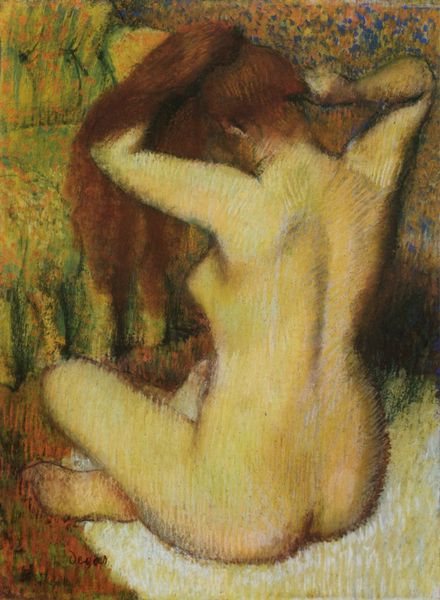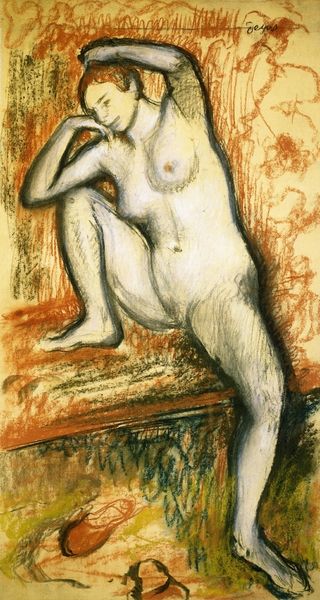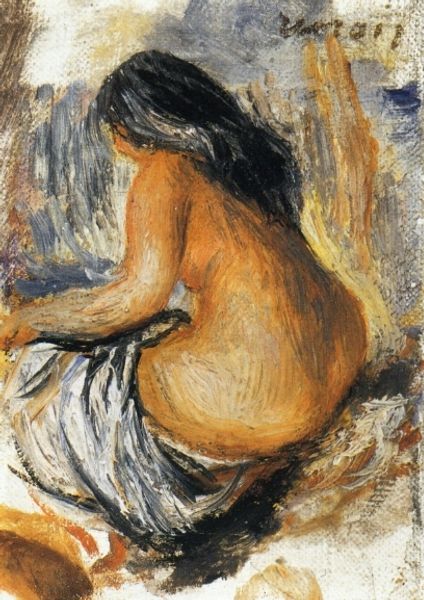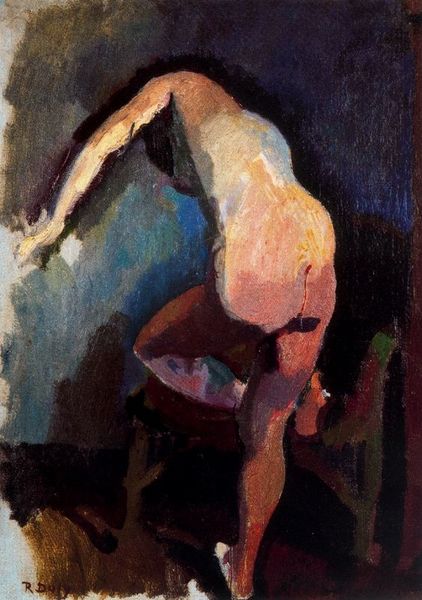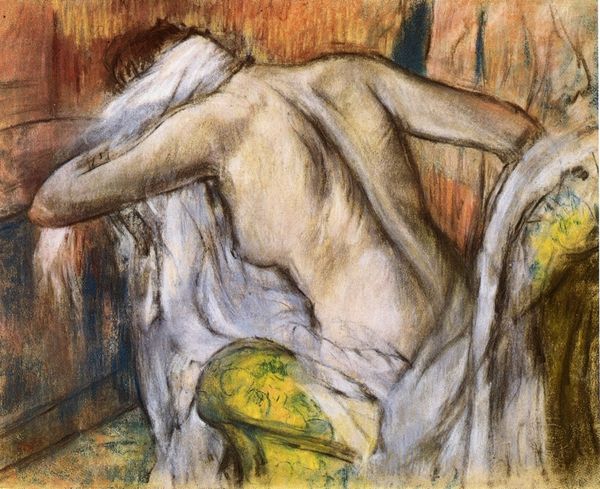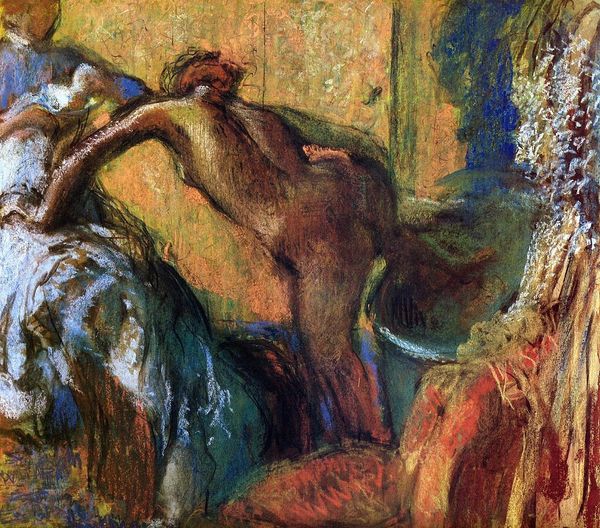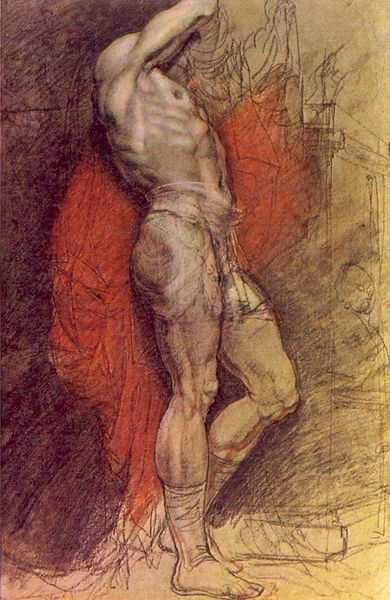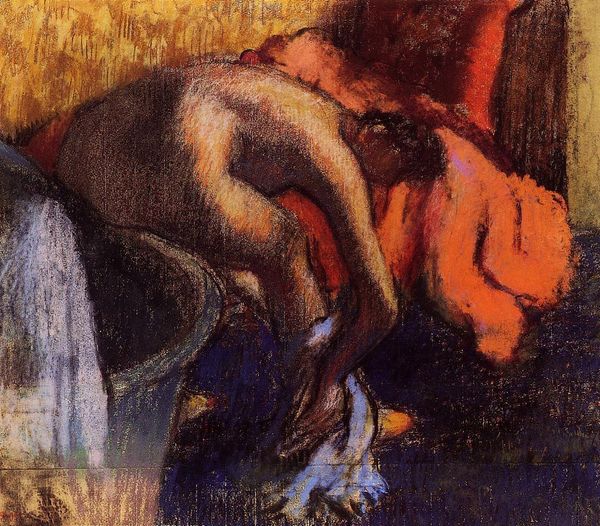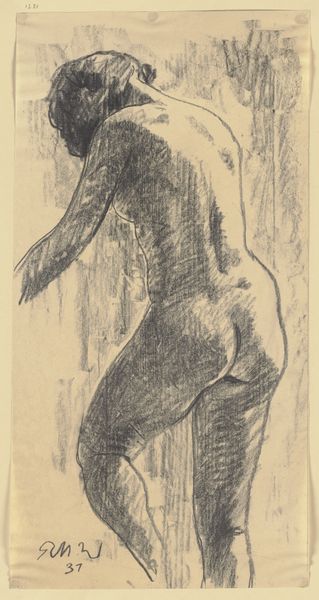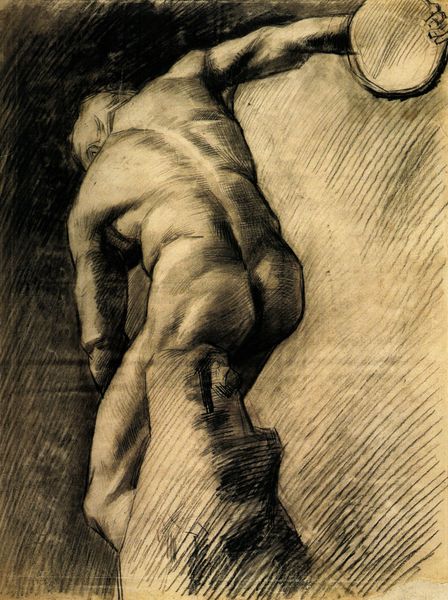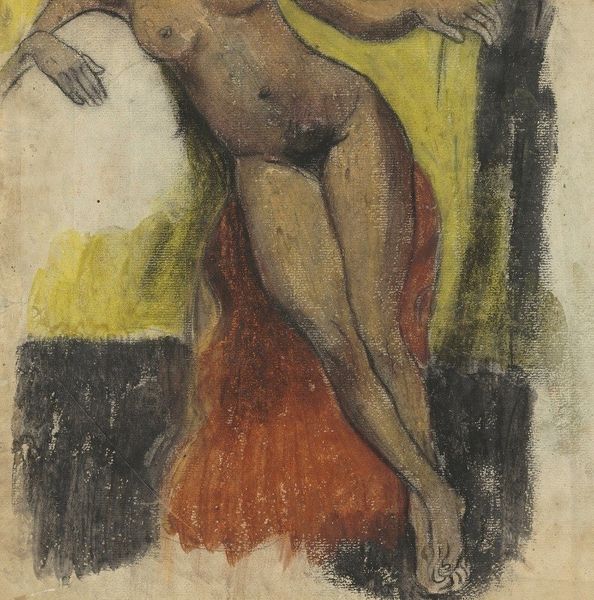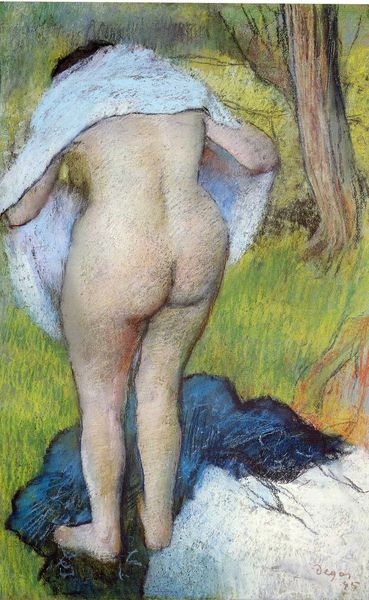
drawing, pastel
#
drawing
#
impressionism
#
figuration
#
oil painting
#
intimism
#
france
#
genre-painting
#
pastel
#
nude
#
watercolor
Dimensions: 44 x 24 cm
Copyright: Public domain
Curator: Ah, here we have Edgar Degas’ pastel drawing "Leaving the Bath," created around 1885. The piece is currently held in a private collection, as many of Degas’ more intimate works are. Editor: Wow, the first thing that hits me is how intimate it feels. It’s like you’re peeking into a private moment. All that warm color, a riot of oranges and reds, surrounding this woman, hunched over. It almost vibrates with a hidden energy. Curator: Absolutely. Degas was fascinated with capturing women in everyday, unguarded moments, and this is a prime example. Unlike traditional nudes intended for male consumption, Degas sought to depict the female body as a physical form engaged in daily routines. Editor: There's this incredible vulnerability to it, that bending posture is somehow awkward and graceful all at once. The pose just oozes intimacy; this isn’t Venus on a half-shell, that's for sure! It really grabs your attention. I bet people had opinions on it back then. Curator: You're spot on. His approach wasn’t always well-received. Critics sometimes accused him of misogyny, unable to grasp his intent. He challenged the established conventions by rejecting idealization in favor of raw observation, capturing fleeting movements. He wasn't just representing; he was interpreting a moment of existence. Editor: And there’s also that signature Impressionistic blur. It’s not photographic; it's like a memory, hazy around the edges. You get this fragmented narrative from the odd perspective – the rug with this sort of red hue seems ready to swallow her into a domestic pattern. And the composition directs our gaze right at her! Curator: The composition indeed subverts expectation. We are denied a clear view of her face, typical in genre-paintings or nude studies of the period, forcing the viewer to engage differently. These are carefully constructed arrangements of lines and forms which is enhanced by his unusual choice of media for its time - pastel. The quick strokes and softness. Editor: Makes it hard to look away, that’s for sure. It sort of celebrates the unremarkable. Capturing real people, real lives, in all their weird and wonderful imperfection. Curator: Indeed, by shifting our focus, Degas opened a door for us to re-evaluate beauty not as an idealized construct, but within ordinary moments. Editor: Looking again, this one lingers... It gets under your skin. A sneaky reminder of all the life happening outside of museums. Curator: Indeed. He asks us to look at it anew.
Comments
No comments
Be the first to comment and join the conversation on the ultimate creative platform.
